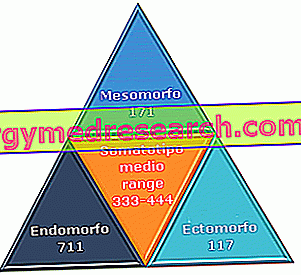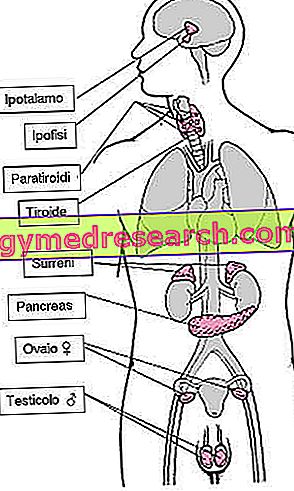Edited by Giovanni Bruno
Schools of constitutionalism have always tried to reduce human variability to certain morphological types with common structural characteristics. In particular, the Somatotype method has its roots in the studies on morphology and body constitution conducted by Hunter in the last century.
The concept of somatotype was applied by Sheldon in 1940 to evaluate the individual morphological structure in a global and quantitative way.
Sheldon identified the endomorphic, mesomorphic and ectomorphic types.

The most commonly used graphic representation is a triangle with curved sides and is called somatocarta . On this two-dimensional representation, the three somatotypical components are projected in a point or " somatoplot ", whose position can express the dominance of one of the components over the others (when it approaches the poles of one of the axes representing the three components), l absence of prevalence of one of the components over the others (when it is in the central regions) or intermediate conditions.
The human somatotypic variability, second Healt and Carter, can be expressed by 13 combinations of the components, which correspond to 13 main somatotypical categories. The possibility of evaluating the success and the level of performance, achieved by an athlete in a specific sporting discipline in relation to his physical structure, expressed synthetically by the somatotype, has led numerous scholars to apply this method in sports.
In high level athletes, in different sports specializations, specific somatotypical values should correspond, while in the same sport the somatotype should assume homogeneous values.
For example The average somatotypic values of the athletes participating in Olympic competitions fall within the mesomorphy with prevalence, in males, of the mesomorphic component over the endomorphic and ectomorphic component. Within this distribution, exceptionally high mesomorphic values are observed in males practicing those sports in which the body is subjected to considerable muscular effort, such as Bodybuilding, Weightlifting, Martial Arts and Gymnastics. In the values of ectomorphy the volleyball players are placed, which although presenting a certain somatotypical variability in relation to the presence of different roles within the team, exhibit a lower weight development compared to the stature.
Among women there are high mesomorphic values for Bodybuilding and Martial Arts practitioners and ectomorphy for volleyball players. If we took a tennis player for example, we would see that the somatotypical values highlight a less "specialized" physical structure than in other sports. Probably the most versatile somatotype is associated with success in a sport in which different characteristics are required simultaneously, such as physical strength and endurance, but also elasticity, flexibility and speed.

In short, take a somatocard, investigate your body and choose the sport that suits you best! Of course I'm joking but the concept is clear: everyone is born and grows with his physical structure and a physicist born to be a marathon runner will never be able to ask to become a professional bodybuilder and obviously the opposite.
As someone said: To each his own.



